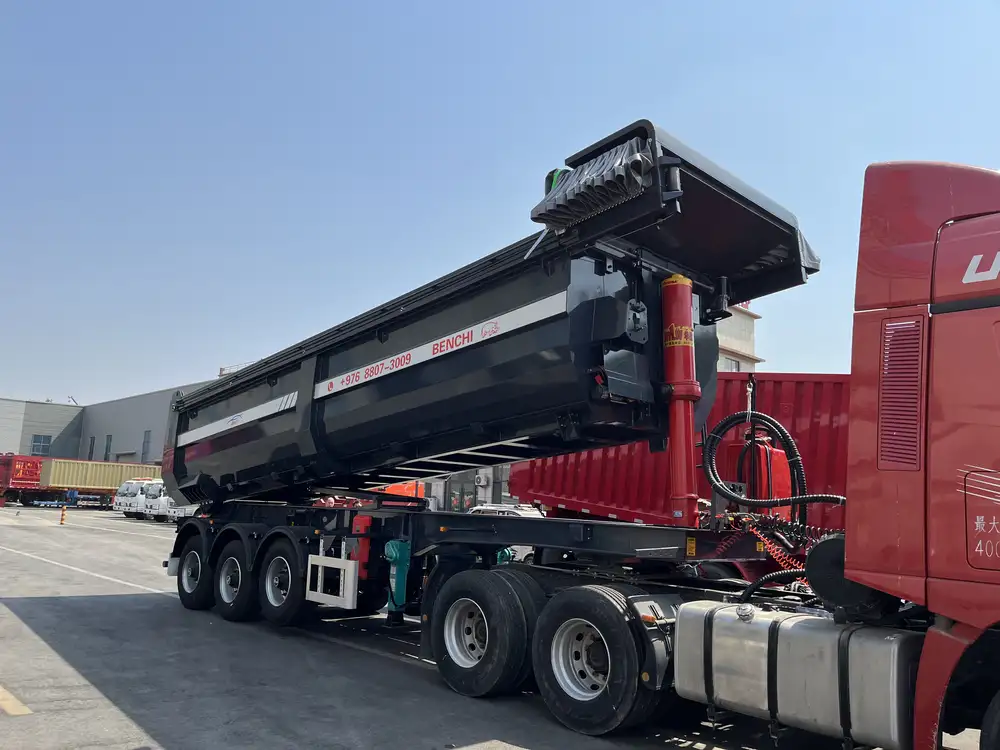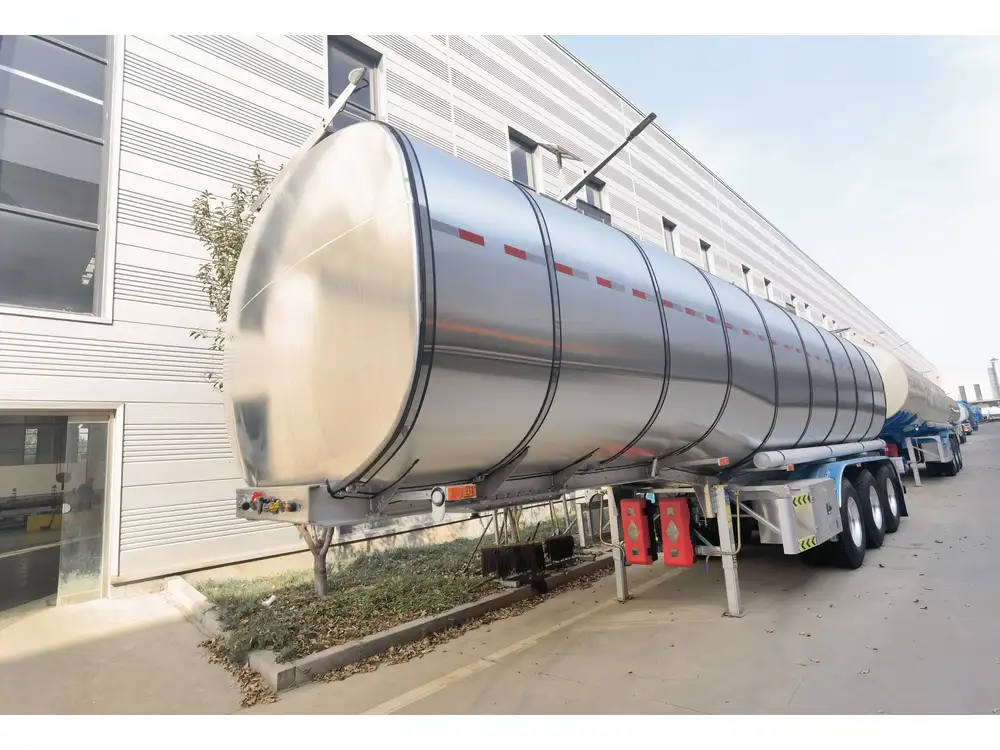Navigating the world of tanker trailers can be a challenging endeavor, especially when it comes to understanding their capacity. For those involved in logistics, transportation, or industry, knowing how many gallons a tanker trailer can hold is crucial. This knowledge not only aids in planning and efficiency but also enhances safety and compliance within transport regulations. In this guide, we delve deep into this topic, addressing various aspects such as types of tanker trailers, capacity specifications, and essential factors influencing their gallonage.
Understanding Tanker Trailers
Tanker trailers are specialized vehicles designed to transport liquids, gases, and other fluid products. They come in various shapes and sizes, tailored to meet specific transportation needs. Whether for fuel, chemicals, food-grade liquids, or water, the design directly correlates with the trailer’s capacity and function.
Types of Tanker Trailers
To grasp how many gallons a tanker trailer can hold, one must first understand the different types of tanker trailers available:
| Type of Tanker Trailer | Description | Common Use Cases |
|---|---|---|
| Fuel Tanker | Cylindrical shape, optimized for liquids like gasoline. | Transporting petrol, diesel, kerosene. |
| Chemical Tanker | Designed with specialized materials for corrosive substances. | Transporting industrial chemicals and acids. |
| Food Grade Tanker | Built to comply with food safety standards. | Carrying dairy, juices, edible oils. |
| Water Tanker | Often larger, meant for transporting potable water. | Municipal water supply, agriculture. |
| Vacuum Tanker | Equipped to suck liquids and solids from sites. | Waste removal, sewage, and sludge. |
Each type has its specific regulations and standards, affecting its capacity limits and operational guidelines.

Capacity Metrics of Tanker Trailers
Gallons and Tanker Size
Tanker trailers are typically measured in both gallons and liters, with the gallon being the preferred unit in the United States. Common capacities for tanker trailers can vary greatly:
- Standard Fuel Tanker Trailer: Typically ranges from 5,000 to 11,600 gallons.
- Chemical Tanker Trailer: Generally provides capacities between 5,000 and 14,500 gallons, varying based on material type and safety specifications.
- Food Grade Tanker: Usually has a capacity of 6,000 to 8,000 gallons, ensuring that it meets stringent hygiene requirements.
- Water Tanker: Can range considerably, from 1,000 gallons for smaller units to up to 10,000 gallons or more.
Industry-Specific Capacity Standards
The design and maximum capacity of tankers often abide by industry-specific standards dictated by regulatory agencies such as the Department of Transportation (DOT) and the Environmental Protection Agency (EPA). For example:
- Fuel Tankers: Must comply with regulations regarding spill prevention and emergency response features, which can influence the maximum allowable capacity.
- Chemical and Hazardous Materials Transport: Governed by stringent laws regarding containment and transport limits, often restricting payload to ensure safety.

Factors Affecting Tanker Capacity
Several elements can influence the overall capacity of a tanker trailer beyond its design specifications:
Configuration and Shape
- Shape: The circular shape of cylindrical tanks allows for efficient liquid handling and optimal flow dynamics, which can affect the total volume.
- Compartments: Some tanker trailers feature multiple compartments, reducing total capacity but enhancing operational flexibility, allowing for the transport of different products simultaneously.
Material Considerations
- Construction Material: Different materials such as stainless steel, aluminum, and carbon steel can influence the weight and volume of the tanks themselves, affecting transport capacity.
- Insulation: The addition of insulation can increase the overall weight without adding to usable capacity.

Load Regulations and Safety Compliance
Strict industry regulations often dictate load limits, which can affect how much liquid a tanker can efficiently and safely transport. Overloading can lead to legal penalties and enhanced risks, prompting many businesses to err on the side of caution regarding load management.
Calculating Tanker Trailer Capacities
To calculate how many gallons a tanker trailer can hold, one must consider various geometric factors and size specifications:
Volume Calculation
For cylindrical tanker trailers, the volume ( V ) can be calculated using the formula:
[ V = \pi r^2 h ]Where:
- ( V ) = Volume in gallons
- ( r ) = Radius of the tanker in feet
- ( h ) = Height (length) of the tanker in feet
To convert cubic feet to gallons, use the conversion factor:
[ 1 \, \text{cubic foot} = 7.48052 \, \text{gallons} ]
Example Calculation
Consider a cylindrical tanker trailer with:
- Radius (r) = 3 feet
- Height (h) = 30 feet
Calculating the volume:
- Calculate area: ( \pi \times (3^2) = \pi \times 9 \approx 28.27 \, \text{sq ft} )
- Calculate volume: ( 28.27 \, \text{sq ft} \times 30 \, \text{ft} \approx 848.1 \, \text{cubic ft} )
- Convert to gallons: ( 848.1 \times 7.48052 \approx 6,352 \, \text{gallons} )
Thus, a tanker trailer of this configuration would hold approximately 6,352 gallons.
Real-World Implications of Tanker Capacities
Understanding the capacity of tanker trailers has real-world implications in various industries:
Optimization and Efficiency
By accurately gauging capacity, companies can optimize routes and loads, ensuring fuel efficiency and reducing operational costs. This, in turn, boosts profitability and sustainability.

Safety and Compliance
Adhering to capacity regulations and safety standards is paramount in ensuring that companies avoid penalties and accidents, safeguarding employees and the environment.
Potential Challenges
Despite the apparent benefits, challenges persist. Variabilities in load weight, trailer configuration, and compliance can complicate operations. Moreover, companies must remain vigilant regarding changing regulations and best practices to maintain operational integrity.
Conclusion
In summary, the number of gallons that a tanker trailer can hold is influenced by multiple factors including its type, design, materials, and relevant regulations. Whether you’re involved in logistics, manufacturing, or transportation of liquids, understanding these elements is crucial. With an array of capacities ranging from 1,000 to upwards of 14,500 gallons, businesses must carefully assess their needs and ensure they comply with necessary guidelines.
Emphasizing a commitment to safety, compliance, and efficiency can lead to improved operations and enhanced profitability in the complex landscape of liquid transportation. By leveraging the insights provided within this detailed guide, stakeholders across the industry can make informed decisions that pave the way for success in their logistical endeavors.



